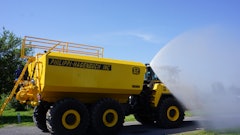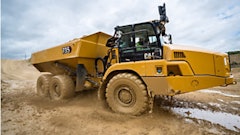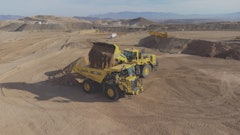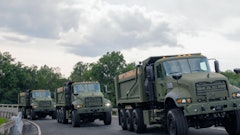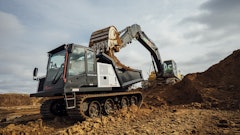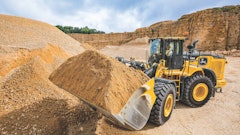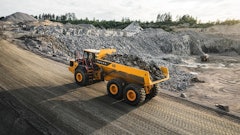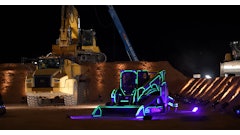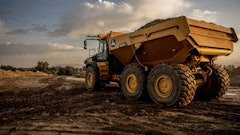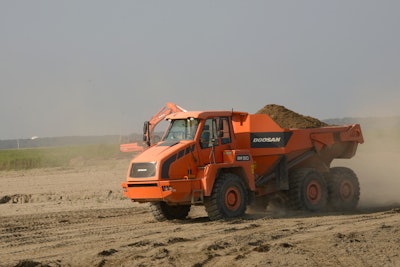
The Port of Virginia, one of the nation’s busiest, and the adjacent Craney Island are located where the James River, Elizabeth River and other smaller rivers meet near Portsmouth, VA. Among the world’s largest natural harbors, the area is called Hampton Roads and is known for its big military presence (Norfolk Naval Station) and huge containerized cargo complex.
The volume of cargo through the port's several terminals is the third highest on the east coast, behind New York/New Jersey and Savannah, GA. Through the first third of 2015, the number of container units entering and exiting the port grew by 8.8%. It is the only East Coast port with congressional authorization for 55-ft.-depth channels.
With hundreds of U.S. Navy and Coast Guard vessels, container ships and barges entering and exiting the port every day, the 12 members of a construction crew working on the nearby island are hardly visible to travelers driving across the river on Interstate 664 between Newport News and Portsmouth. Yet, the crew’s job plays an important role in helping to keep the 50-ft.-deep entrance channel operating as efficiently as possible.
Commissioned for Erosion Control
After approval by Congress as part of the River and Harbor Act of 1946, construction of Craney Island was completed in 1957 at a cost of $6 million. It was designed as a low-cost alternative for the placement of material dredged up from the deep-water shipping channel.
Over time, erosion has taken a toll on the island and it came time to replace the existing, randomly placed concrete rubble along the northern shoreline. The revetment project called for the construction of 4,100 linear feet of shoreline protection, eight breakwaters and sand fill placed landward of the breakwaters.
The U.S. Army Corps of Engineers hired Precon Marine Inc. to handle the $11.6 million Craney Island Northern Shoreline Revetment Phase 3 project. Established in 1993 and with two locations in Hampton Roads, VA, the diversified contractor specializes in heavy marine construction, waterfront construction and related services. It has a successful track record in major bridge, pier and bulkhead rehabilitation work and underwater utility installation.
“Our assignment, which began last fall, is to construct a mile-long barrier wall along the north side of Craney Island to curtail erosion,” says Gene Hand, project manager for Precon Marine. “This very valuable, 2,500-acre property is officially called the Craney Island Dredged Material Management Area and, if it were to erode away, the impact on the movement of cargo both by the Navy and private firms would be significant.
“My first impression of the job was dealing with the environment,” says Hand, who has spent his entire career working in and around water. “The island is exposed to wind and storms on all sides. It is hot in summer, cold in winter. There is really no way to get out of the harsh weather. Along with abundant wildlife and birds, the place is overrun with bugs and insects. It is not the ideal location.”
Heavy-duty Trucks for Heavy Loads
Since last September, Precon Marine has been working around weather-related obstacles to build the breakwater structures. The structures consist of large armour stones and plastic baskets — commonly known as “mattresses” — filled with medium-size core stones, along with sand hauled in to construct a peninsula out to each breakwater.
The armour stones, which are resistant to wear and erosion, are delivered by barge down the upper James River from a nearby quarry. They are off loaded by an excavator, placed into articulated dump trucks (ADTs) and delivered to the breakwater jobsite or stockpiled for later use.
“Each stone weighs about 500 lbs., so one of our requirements was to use top-of-the-line, heavy-duty trucks,” Hand says. “Doosan DA30 articulated dump trucks turned out to be the perfect fit for this rough application. We put wear plates in the bed of the trucks to absorb most of the abuse. With a month or so to go on the project, we have moved approximately 60,000 tons of armour stone in the trucks. They have held up exceptionally well.”
Precon Marine purchased a pair of DA30 ADTs from the local Doosan heavy equipment dealership, H&E Equipment, in Chesapeake, VA. In addition, it is using a DL420-5 wheel loader equipped with a pallet fork attachment for moving equipment around the jobsite and off-loading trucks, and with a bucket for loading stone. The company also rented a third Doosan ADT and a pair of crawler excavators, a DX350LC-3 and DX350LC-5, to assist with various parts of the project.
“I had no previous experience with Doosan trucks prior to this assignment, but what I have seen is impressive,” Hand says. “This is 100% heavy-duty work. The trucks are durable, reliable and quiet. They are very strong workhorses. The operators really like them.”
With a 23-cu.-yd. body volume capacity, the 365-net-hp DA30 is capable of moving a significant amount of material every day, then dumping it from the truck box with a standard scissor-type tailgate. When not moving the armour stone, the trucks are hauling sand (reclaimed from dredging material) from the other side of the island to where the breakwaters are being built, a distance of about 1 1/2 miles. The trucks can travel up to 34 mph.
“If we have a lot of rainfall, the roads disappear,” Hand says. “Last winter, we had a 6-in. snowfall one day and another 7 in. the following day, which was very rare for this area. Then the temperature dropped to 11° F. As a result, the road froze and we had to shut down.”
When the roads are open, the trucks make dozens of trips each day hauling sand; they are in use 10 to 12 hours a day. “The trucks are very easy to operate and to maneuver through some difficult situations,” Hand says. A free-swinging rear tandem bogie helps to maintain ground contact for all six wheels for a smooth ride and good traction in soft and wet ground conditions.
By the time the project is completed, the trucks will have delivered more than 160,000 cu. yds. of sand to the breakwaters.
![Hcm Ax Landcros Dual Branded Logo[25]](https://img.forconstructionpros.com/mindful/acbm/workspaces/default/uploads/2025/11/hcmaxlandcros-dual-branded-logo25.Qhg3vUCjoK.jpg?auto=format%2Ccompress&bg=fff&fill-color=fff&fit=fill&h=100&q=70&w=100)
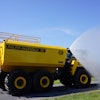
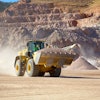
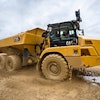
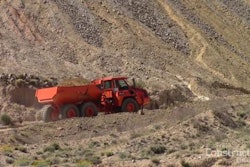
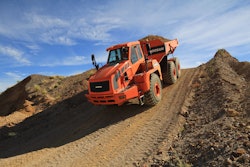
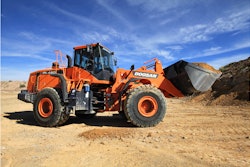

![Hcm Ax Landcros Dual Branded Logo[25]](https://img.forconstructionpros.com/mindful/acbm/workspaces/default/uploads/2025/11/hcmaxlandcros-dual-branded-logo25.Qhg3vUCjoK.jpg?ar=16%3A9&auto=format%2Ccompress&bg=fff&fill-color=fff&fit=fill&h=135&q=70&w=240)

